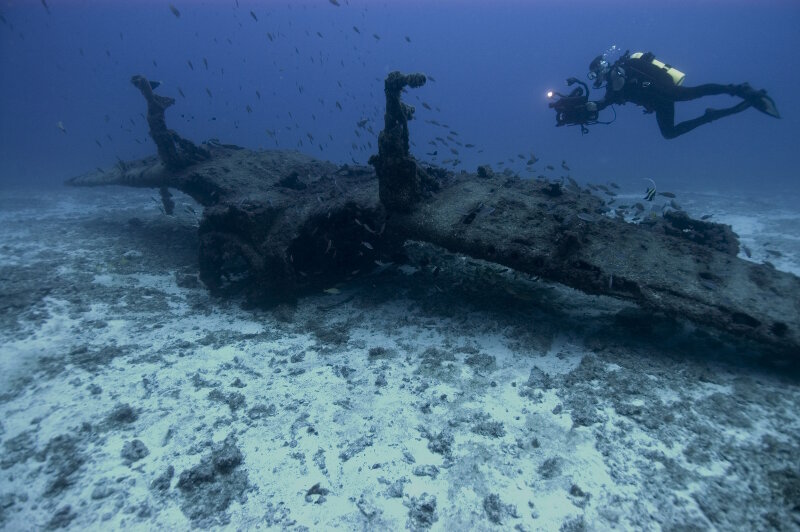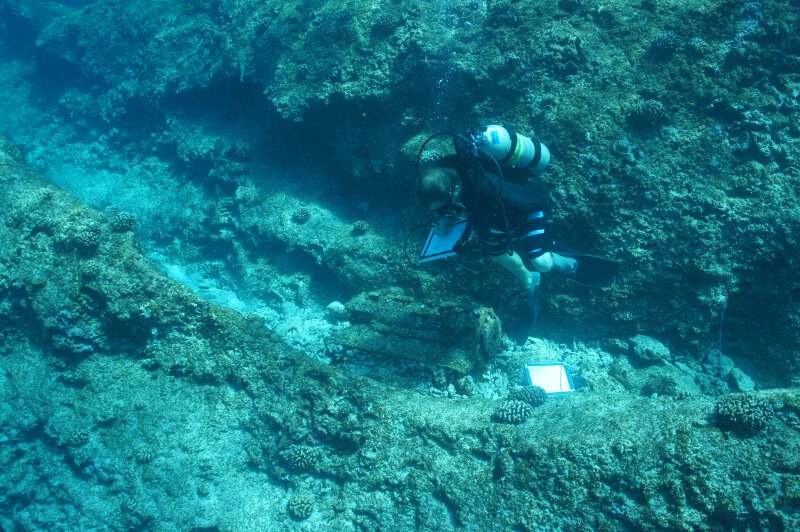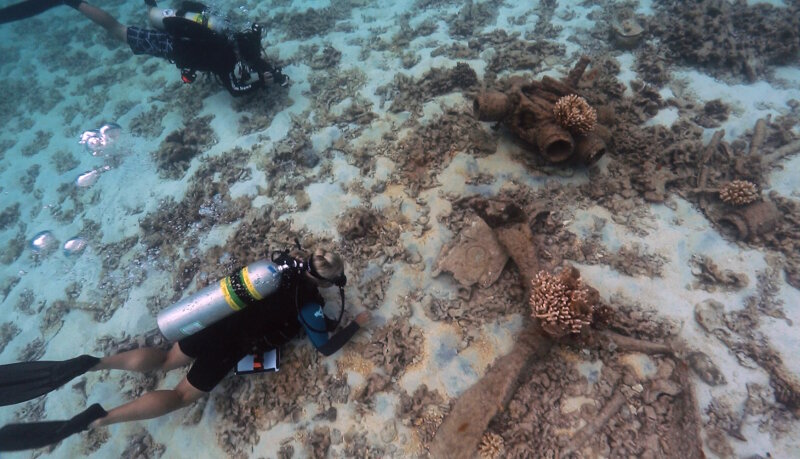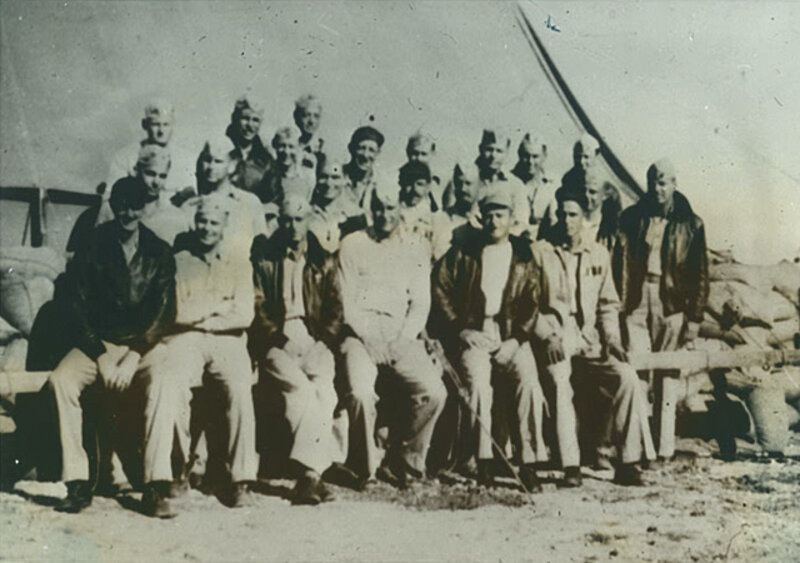
By Kelly Keogh, PhD, Maritime Heritage Coordinator/Maritime Archaeologist - Papahānaumokuākea Marine National Monument
In this video, the NOAA Martime Heritage Team investiages a sunken Brewster F2A-3 site at Midwall Atoll. Video courtesy of Papahānaumokuākea Marine National Monument & World Heritage Site. Download (mp4, 94.8 MB).
This project focuses primarily on the exploration for sunken aircraft sites and the niche of aviation archaeology. Aviation archaeology is a relatively new field of study. Despite the fact that most sunken aircraft sites are relatively recent (<100 years old), and the technology is contemporary enough to include the type of background information that provides details about construction, etc., the unique opportunity that aviation archaeology presents is the ability to open windows in to significant moments in history where pilots and their relatives may still be alive to compliment the material culture discovered on the seafloor. The opportunity to combine first-hand accounts with dynamic sites discovered via exploration creates an emotional connection that inspires us all and reinforces the lessons and relevance of history.

An underwater filmmaker documents the wing section of a F4U Corsair at Midway Atoll. Image courtesy of Tane Casserley/NOAA. Download larger version (jpg, 3.3 MB).
The lost aircraft of Midway are not just aviation archaeology sites – they are war graves and tangible reminders of the sacrifices of brave young aviators who took to the skies during World War II.

Maritime archaeologist Jason Raupp documents the engine of a P-40K Warhawk Discovered outside of the reef at Midway Atoll. Image courtesy of Kelly Keogh/NOAA. Download larger version (jpg, 10.1 MB).
This project will contribute to the field of aviation archaeology via discovery, documentation, and interpretation of several sites that will provide the public with compelling stories that make connections to World War II activities in the Pacific. Even more significant is the timing of this project, which will take place in advance of the 75th Anniversary of the Battle of Midway in June of 2017.

Maritime archaeologists document the remains of a Brewster F2A-3 Buffalo at Midway Atoll. Image courtesy of Stephani Gordon/Open Boat Films. Download larger version (jpg, 2.4 MB).
Aircraft discoveries are significant because of how much they differ from shipwreck sites, and the broader implications for the nascent field of aviation archaeology for this proposal lies in a battlefield approach to surveying multiple aircraft sites representing a famous battle like the Battle of Midway.
Questions developed to address the unique survey of sunken aircraft sites include:

VMF 221, a Marine Corps fighter squadron at Midway Atoll in January of 1942. The Brewster discovered in the lagoon was part of this squadron. Image courtesy of John Powell. Download larger version (jpg, 221 KB).
As the generation of pilots that flew these aircraft continues to dwindle, there is a compelling need to incorporate their first-hand knowledge of these planes and how they were used into the discussion of how to document and interpret the wreckage.
Scientists involved in this project have collected dozens of first-hand observations about aircraft wreck locations at Midway Atoll (in addition to aircraft loss locations based upon archival research). Based on discoveries made in 2014 and 2015 of sunken aircraft within Midway’s waters, we have a large degree of confidence in the locational accuracy of historical accounts of aircraft losses. Due to the chaos of the conflict, some of the most accurate information about location of sunken and lost aircraft sites has come from the first-hand observations of the men who fought for this tiny atoll in 1942.